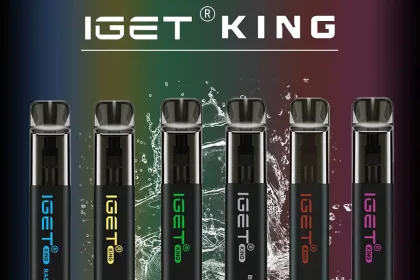Vaping has become a significant cultural phenomenon over the past decade, with millions of users worldwide. What began as a smoking cessation aid has evolved into a multi-billion-dollar industry with a diverse range of products and flavors. This article explores the origins, effects, and controversies surrounding Relx Pods, providing a well-rounded understanding of this modern trend.
Origins and Evolution
Vaping emerged in the mid-2000s, attributed to Chinese pharmacist Hon Lik, who developed the first commercially successful e-cigarette. His invention aimed to offer a safer alternative to traditional smoking by eliminating combustion and the resulting harmful tar and chemicals. Early e-cigarettes closely resembled conventional cigarettes, but as technology progressed, the designs became more sophisticated and varied.
How Vaping Works
Vaping devices, or e-cigarettes, consist of a battery, a heating element (coil), and a liquid cartridge known as e-liquid or vape juice. The liquid, which contains nicotine, flavorings, and other chemicals, is heated by the coil to produce an aerosol (commonly referred to as vapor). Users inhale this vapor, which is touted as being less harmful than traditional cigarette smoke.
Health Implications
The health effects of vaping are a subject of ongoing research and debate. Proponents argue that e-cigarettes are less harmful than smoking due to the absence of combustion and reduced exposure to harmful chemicals like tar and carbon monoxide. However, vaping is not without risks. Studies have shown that e-cigarettes can still deliver nicotine, which is addictive and can impact brain development in adolescents. Additionally, some e-liquids contain harmful substances such as formaldehyde and acrolein.
Recent reports have also raised concerns about a condition known as vaping-associated lung injury (VALI), which has been linked to certain vaping products, particularly those containing THC or vitamin E acetate. This has led to increased scrutiny and regulatory actions.
Youth and Vaping
One of the most controversial aspects of vaping is its appeal to young people. The colorful designs and a wide array of flavors have been criticized for attracting minors. In response, governments and health organizations have implemented regulations to restrict the sale and marketing of vaping products to youths. Despite these measures, the prevalence of vaping among teenagers remains a significant concern.
Regulation and Legislation
Regulatory approaches to vaping vary globally. Some countries have embraced vaping as a harm reduction tool, while others have imposed strict bans or regulations. For instance, the United Kingdom promotes e-cigarettes as a smoking cessation aid, whereas Australia has implemented stringent controls. In the United States, the Food and Drug Administration (FDA) has begun regulating e-cigarettes, focusing on marketing practices and product safety.
The Future of Vaping
The future of vaping is likely to be shaped by ongoing research, public health initiatives, and regulatory developments. As more data becomes available, the vaping industry may see changes in product formulations, marketing strategies, and regulatory frameworks. The balance between offering a less harmful alternative to smoking and protecting public health, especially among young people, will continue to be a critical factor.
Conclusion
Vaping remains a complex and evolving issue. While it offers a potential alternative for those seeking to quit smoking, it also presents new challenges and risks. A nuanced understanding of vaping’s benefits and drawbacks is essential for making informed decisions about its use and regulation. As research progresses, it will be crucial to stay informed and adaptable in addressing the impact of vaping on individual and public health.


